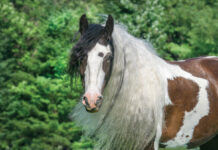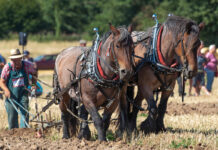The Mustang horse is a symbol of the wild west, and a beloved icon to horse lovers. Learn more about the breed’s legendary history and its characteristics.
Mustang Horse History

Many Native American tribes “liberated” horses and brought them further into North America. As America evolved, horses from Europe were imported, and offspring accompanied the settlers moving west. Wild horse bands formed from escaped or abandoned horses.

In 1971, the Wild Free-Roaming Horse and Burro Act was passed protecting Mustangs from slaughter. Congress established Herd Management Areas, and the Bureau of Land Management gathers and offers the excess animals for adoption.

Mustang Characteristics
Mustangs have no overall characteristics because different breeds of horses have contributed to the development of wild horses in various areas. Draft horses were popular in certain areas among settlers, and hot-blooded horses were more popular in others.

Some are large and full-bodied, while others are smaller and daintier in appearance. The abundance of or lack of forage also helps determine size.
Horses range from 13 to 16 hands high and are all colors, including black, bay, dun, palomino, gray and spotted.


For More Information
- Mustang Heritage Foundation
- Bureau of Land Management Wild Horse and Burro Program
- BLM Wild Horse online auctions
Further Reading:
- Out of the Wild Part One: Mustang Matchmaker
- Do You Have What It Takes to Train a Mustang?
- The Mustang Mind
- Training Mustangs is a Family Affair
- Training Mustangs for English Sports
This article was originally published in 2006 with Horse Illustrated magazine. Click here to subscribe!






